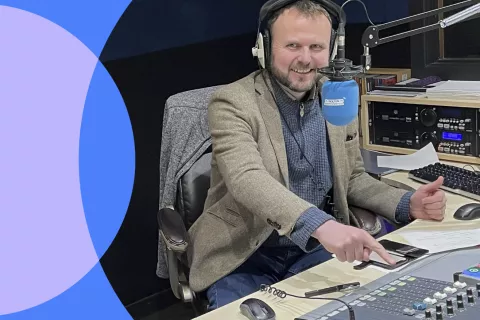What is a CODA you ask? CODA is an acronym for ‘Children of Deaf Adults’. We make up approximately 90% of all children with Deaf parents, the other 10% being Deaf themselves.
Being Deaf can be genetic, but most of the time it is an effect of another condition, illness, or treatment process.
My Roots
Both of my parents are Deaf due to illness. Mum had meningitis when she was 3 and it was one of the responses to the treatment she underwent. With Dad, his mum (my Grandma), had German Measles whilst pregnant and this resulted in him being born Deaf.
Both went to Deaf boarding schools, very different schools.
Dad went to a school where use of sign language was punishable, and for those of you who went to school in the 60s and 70s, punishment was not just a detention or being made to sit in silence during lunch.
Mum on the other hand went to a school where being Deaf was embraced, something to be proud of, where they learnt sign language, in a similar way to how we learn English Language. Their respective home environments were very similar to their school environments…
A question, who do you think is better at lipreading? More integrated into the ‘hearing world’? Has the better range of communication skills? Mum. A simple lesson in embracing who you are and your abilities to become the best you can possibly be. And embracing who other people are, and their abilities, to support them to be the best they can possibly be.
You can make a difference
As a child I was able to master 2 languages, spoken English and BSL (British Sign Language). Up to the age of around 4, BSL would have been considered my first language, the language I was more proficient using. That changed as I started school, but BSL was, and always will be, a core part of my skillset. I take for granted the skill it has given me, and I may say this like it’s an easy thing to do (I know it isn’t) but confidence when speaking to a Deaf person is everything.
- Be confident to show expression in your face and body language.
- Be confident to verbalise as you normally would (don’t talk louder or move your lips more).
- Be confident to ask the Deaf person to repeat what they said, and don’t feel like you’ve failed if you’re asked to repeat yourself.
- Be confident to use any sign language you know or think you might know. Any form of visual communication is better than none.
- Just making the effort is more than the Deaf person is likely used to.
And some tips for your environment…
- Success is much more likely in a place where there is limited distraction, stepping to one side if your somewhere busy can make all the difference.
- Don’t stand directly in front of a window or bright light. It creates huge amounts of shadow which make your gesture and lip movements difficult to read.
- Do make sure the environment is well lit.
- And the final, most important tip, be patient.
The CityFibre Way
I have been with CityFibre for 7 months now and, when the opportunity to bring a ‘skill’ to the table during our Learning Live Hour presented itself, I couldn’t say no! A simple introduction to BSL. I was astounded by the response to the session, the turnout, and the apologies (and subsequent requests) from people who could not make it. It made me prouder to work for a company where the employees really do align with the values and they’re not just a snazzy catchphrase to recruit staff or sell services, so thank you.
Getting Involved
I have recently become a part of the Disability and Carers Network. Whether you have lived experience, are passionate about the area, or would simply like to know more about Disability and Caring and the work CityFibre do, it’s a fantastic forum for discussion and change.
by Simon Goode, Compliance Data & Systems Analyst



